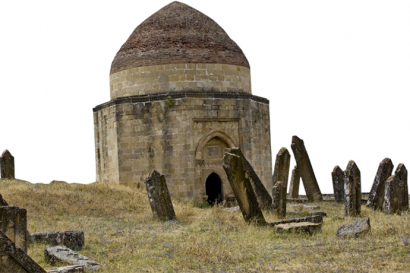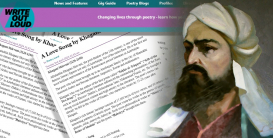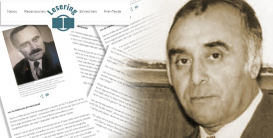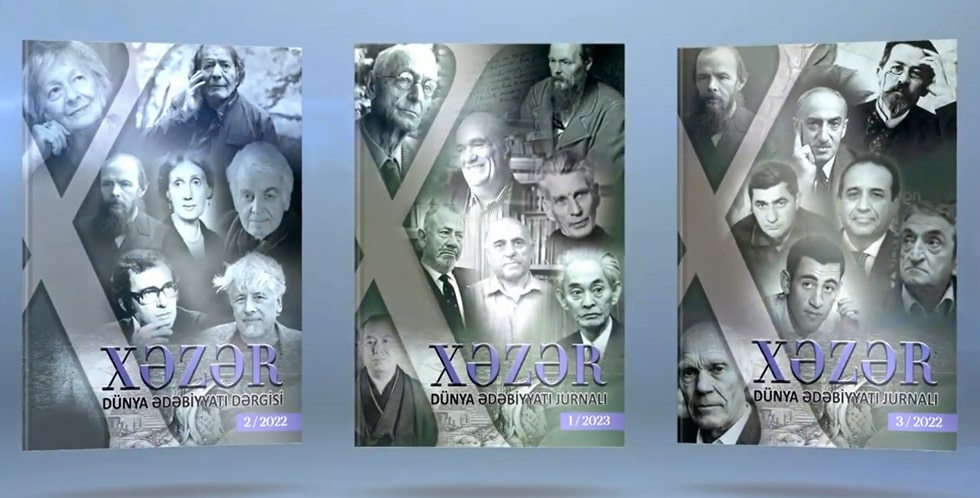Holy Places of worship

During the Soviet period for a century, we were separated from our religious faith. The system made us almost forget the holy places that our ancestors believed in. The forgetfulness removed from our memory so many valuable pages from the history of our native land.
The holy places that we’d like to introduce to you will provide you with certain information on the past of our history.
The Caliph Syed Ahmad’s tomb
In XII-XIII centuries, during the collapse of the Islamic Caliphate the caliphs were frequently changed. There were caliphs that were on the throne a week, even a day. These caliphs were either plucked out their eyes, or executed. Some of them could survive if they could manage to run away from their country.
There’s a tomb in Azerbaijan – presently it is a holy place for Azerbaijanis– that is considered to be the Caliph Syed Ahmad’s grave. Caliph Syed Ahmad is considered one of the Arabic caliphates who fled from the country because of his persecution and sought protection in Azerbaijan.
According to an unofficial sources, Caliph Syed Ahmad initially settled in the suburb of Daghbiliji village in Shabran District. But as he received a cool reception from the local inhabitants, he left the place at night with his family and livestock. The other day the inhabitants knew about the caliph’s sudden disappear, and were anxious about it. They could find his new settlement and asked him to come back. But the caliph Syed Ahmad refused to return to Daghbiliji village and promised to forgive the inhabitants with one condition: “I’ll forgive you if you want to acquire merit in God's sight, take care of my house and repair it if there is any need in it.”
In the 1950s, the Caliph Syed Ahmad’s tomb was repaired and there were found some papers. According to these papers, it was discovered that in the 1920s this tomb was one of the most holy places for pilgrimage in the region. The holy place was located in a huge area with field cropping.
One-room tomb was made of wood. There are a great number of graves around the tomb. Inscriptions on the tombstones are in Arabic. The tombstones went deep into the ground; it indicates that these tombstones have ancient history.
Presently in the area where the Caliph Syed Ahmad had settled once is a big village now. This village is named Caliphalar.
Shikhzaddin Baba
On Shabran-Guba region there is a tomb called Shikhzaddin Baba. This tomb became a holy place for many people. Shikhzaddin Baba is buried in Puchug village, in the foot of Kalaku Mountain.
According to sayings passed from generation to generation and centuries Shikhzaddin Baba’s ancestors came here from Sham city (Damascus), Syria. They were the promoters and supporters of Islam religion in Shirvan region.
According to chronicles, at early XVII century when Shah Abbas I of Persia was travelling to Dagestan his cavalrymen pitched a camp in the Koteh flat in Khaltan valley near Shamakhi. Towards evening, Shah Abbas I saw lights at the foot of Kelaki mountain. The shah sent two soldiers to that place. When the soldiers reached the place, they saw a very old man sitting and reading Koran under the candle light.
The soldiers introduced themselves and asked the old man to come with them to the shah’s camp.
The old man finished reading and said:
“You go, I’ll come later.”
When the soldiers came to the camp, they were very surprised to see the old man standing before the shah. They explained to the shah what had happened.
Shah Abbas I learned that the old man was a very religious person with a higher education on religion. Even Shah Abbas I learned that Shikhzaddin Baba was able to create magic with God’s permission. Shah Abbas asked him to show a magic. Then Shikhzaddin Baba took a cinder from the fire in front of Shah Abbas and stuck it into the ground, and it immediately turned into a green leaf. After that Shah Abbas gave him a huge piece of land in Gomur region as a present.
Folk ashug Khaltanly Taghy in Shirvan region devoted a very nice poem to Shikhzaddin Baba praising him two centuries ago.
Aydin TAGHIYEV
AND OTHER...
-
 Khagani Shirvani’s Creativity on the Literary Portal of England
Khagani Shirvani’s Creativity on the Literary Portal of England
“Write Out Loud”, the leading poetry portal of England, has posted in English the ghazal “A Love Song” by the great Azerbaijani poet Khagani Shirvani as part of the...
-
 Isi Malikzade’s Creativity on German Literature Magazine
Isi Malikzade’s Creativity on German Literature Magazine
LESERING.de, a popular German e-literature magazine, has posted in German the short story Salt by Isi Malikzade, the notable Azerbaijani writer, as part of the AzSTC project “Azerbaijan Literature in an International Virtual World”.
-
 Movlud Movlud’s Short Story on Turkish Portals
Movlud Movlud’s Short Story on Turkish Portals
“Detayhaberler.com”, “Dibace.net” and “Haber.232.com”, leading Turkish portals, have posted in Turkish the short story “We Have Already Grown Up” by the...









